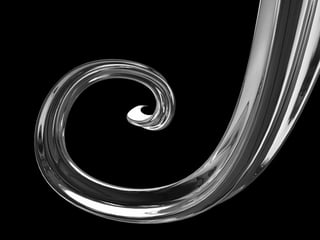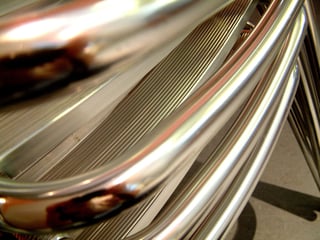What is Metal Finishing?
Metal finishing is a type of surface finishing that can be defined as the deposition of a metallic coating onto a product either to enhance performance, function or aesthetic qualities while providing overall added value. While it's not obvious on a daily basis, many objects have been subjected to metal finishing for use in our normal lives. These include parts in a car, aircraft, fencing, medical and dental devices, industrial machinery or even beautiful pieces of art. The term finishing is based on the fact that it's normally the last step of the manufacturing process (save for any heat treatment).

By including metal finishing to a product one or more of the following is added to the overall quality:
- Increased robustness
- Enhanced aesthetic appeal
- Improved electrical conductivity
- Higher electrical, chemical, or tarnish resistance
Types of Metal Finishing
In the world of metal finishing, there are countless techniques, methods, and processes to achieve similar objectives. A few of the more notable ones include:- Electroplating - An electrodeposition plating process method which utilizes electrowinning principles by submerging the item to be plated as a cathode and the desired metal for its coating as the anode.
- Electropolishing - A polishing method often considered reverse electroplating, where the parts are the anode and the passing current will result in dissolution of the part's top layer removing flaws from the surface into the electrolytic solution.
- Electroless Plating - A plating method which does not use external electricity, but instead uses several concurrent electroless reactions in an aqueous solution.
- Metal Etching - A chemical process where lines are engraved into a metal part that is typically covered with a specialized acid-resistant coating. The engraved lines expose the surface leaving those areas open to defined etching when submerged into an acid bath.
-Cobi Jones
How does Electrowinning play into all of this?
First of all, electrowinning is simply the process of applying a current across an anode and cathode to 'win' metals from solution. The process has been used industrially for hundreds of years and is often touted as the 'oldest industrial process'. Electrowinning involves an insert, insoluble anode along with a cathode surface onto which the target metal is plated. Electrowinning differs from electrorefining in that the anode is inert and insoluble, whereas in electrorefining the anode is actually comprised of an impure form of the metal to be refined. Now back to how electrowinning relates to metal finishing.
Metal Finishing Waste Water
Each metal finishing technique starts off with a process bath charged with chemicals such as surfactants, cleaners, acids, alkalines, solvents, and of course metals into which the desired parts to be finished are submerged. Once these parts complete their surface finishing process resulting in a smoother, stronger and enhanced surface, the parts are 'dragged out' and sent to a rinse tank with fresh water to remove excess chemicals. The rinse water in this process increasingly gains higher and higher concentrations of metals eventually reducing the effectiveness of the rinse.

One solution is to use electrowinning to recover metals from the rinse waters, specifically from drag-out tanks, generated by metal finishing operations. The recovered metal can be reused as a plating electrode or sold for reclaimed value while the effluent (now with metals removed) can be recycled within the operation or further treated by the downstream water treatment plant. In acidic solutions the electrowinning process will also regenerate acid that can be recycled within the metal finishing operation.
Controlling Metal Finishing Processes
Controlling process variables is critical to achieving the desired quality of the finish. These variables include time, current density, metal concentration, and temperature. When using soluble anodes, an important consideration is the relative efficiency of the oxidation and reduction processes taking place at the anode and cathode. When the anodic efficiency is higher than the cathodic efficiency, the amount of metal going into solution exceeds the amount of metal plating out of soluting, and the result is a build up of metal over time. Electrowinning is an effective way to to control the metal concentration by acting as a sort of 'kidney' to selectively remove metal from the bath to maintain the concentration within the target range. The metal recovered can be recycled with the operation preventing losses, minimizing waste and increasing margins.
How can electrowinning help your metal finishing operation?
Some of benefits of incorporating electrowinning into metal finishing operations include:
- Reduce or eliminate costs associated with disposal of hazardous wastes, effluents and residues
- Recover and recycle metals, acids and process water within your facility
- Improve compliance with environmental permitting and reduce liabilities
- Improve product quality for happier customers
- Improve margins for happier shareholders
References:
- https://www.thomasnet.com/articles/custom-manufacturing-fabricating/types-metal-finishing/
- https://www.misumi-techcentral.com/tt/en/surface/2012/08/127-types-of-surface-treatments-and-the-methods.html
- http://www.electrophoretic.com/site/index.php?option=com_content&view=article&id=28&itemid
- https://www.mmsonline.com/articles/metal-recovery-and-wastewater-reduction-using-electrowinning
- http://infohouse.p2ric.org/ref/39/38853.pdf
- http://infohouse.p2ric.org/ref/13/12382.pdf
- https://www.freeimages.com/photo/metalic-spiral-1158215
- https://www.freeimages.com/photo/kitchen-chairs-close-1463937






